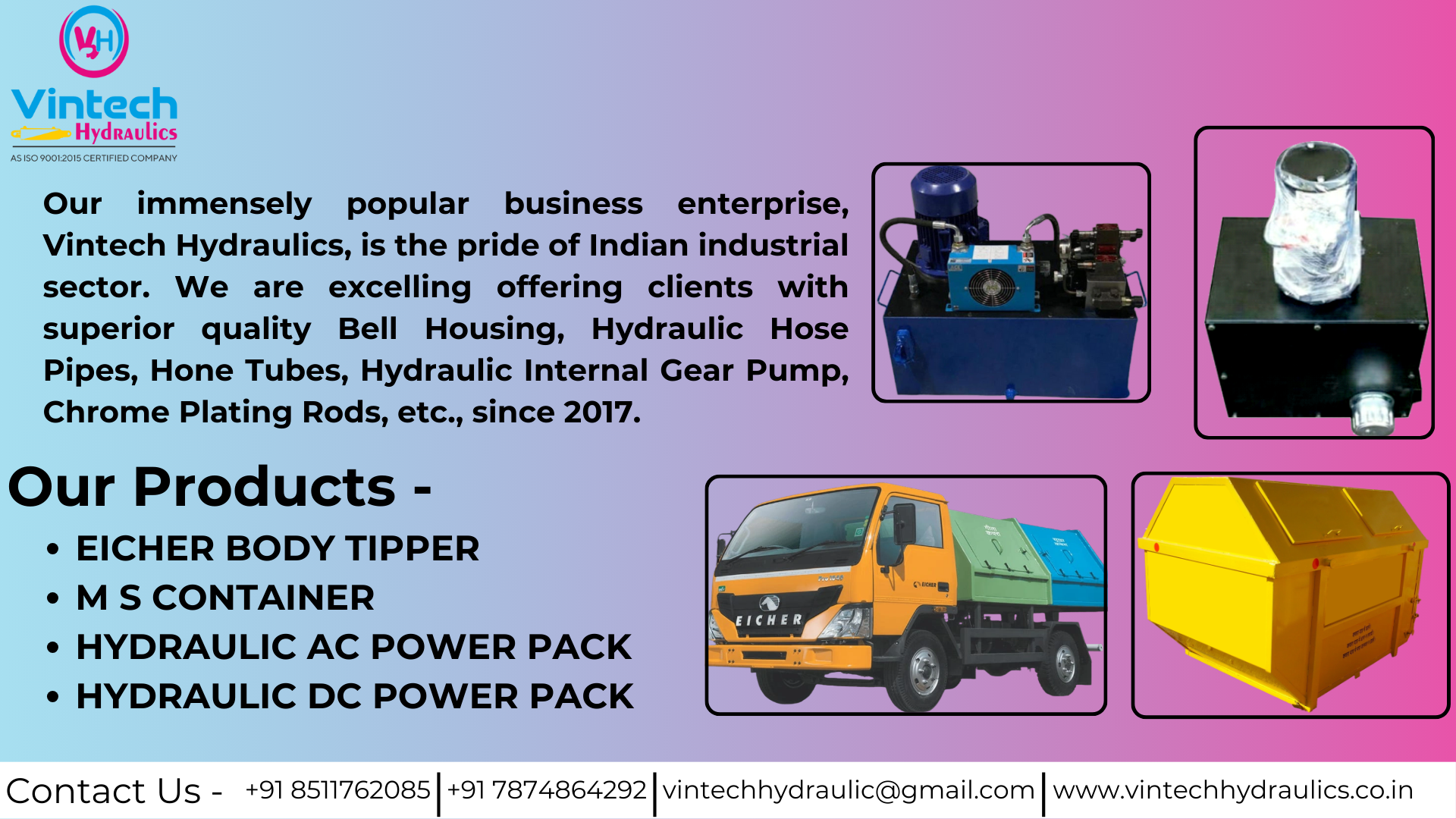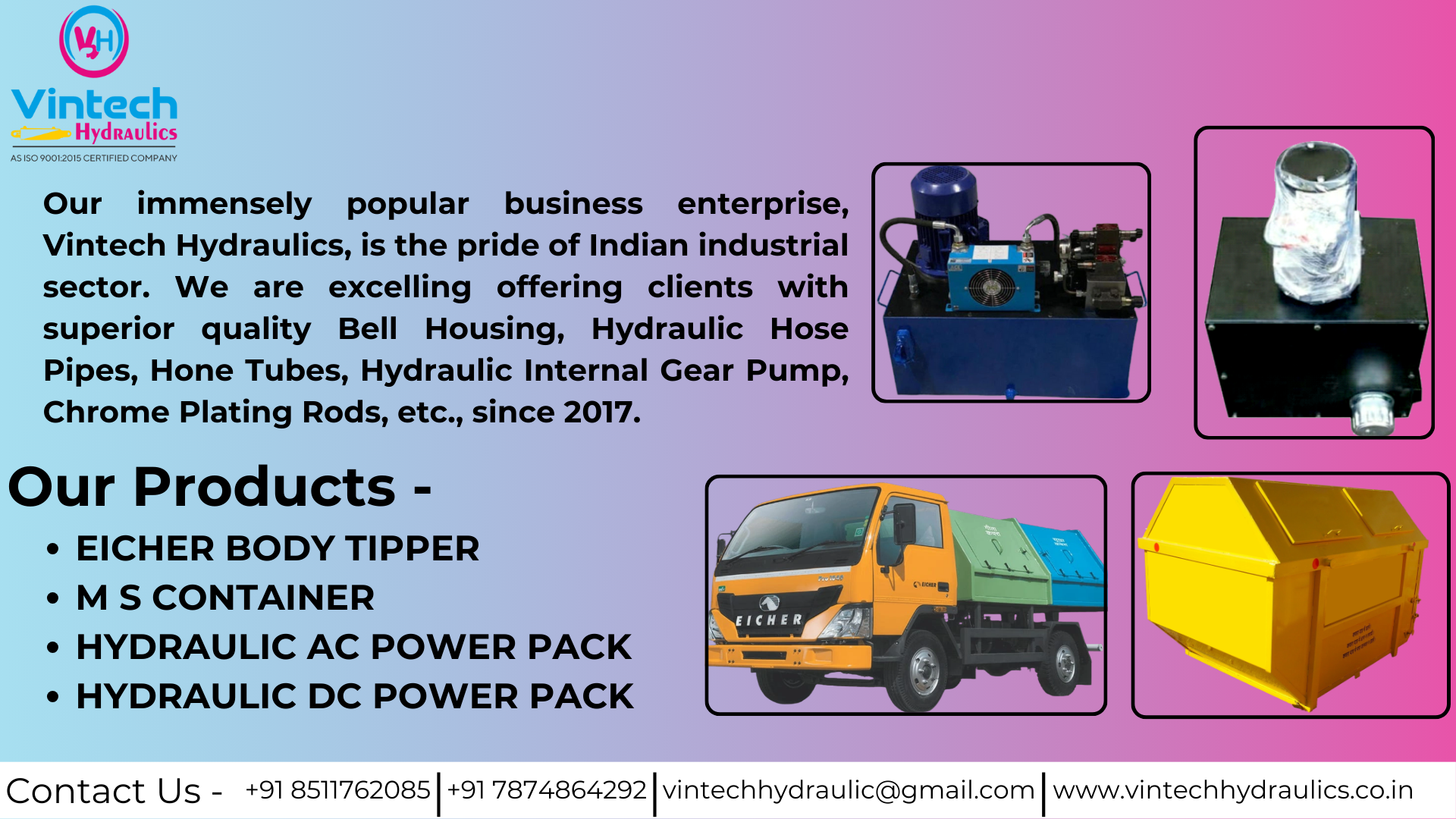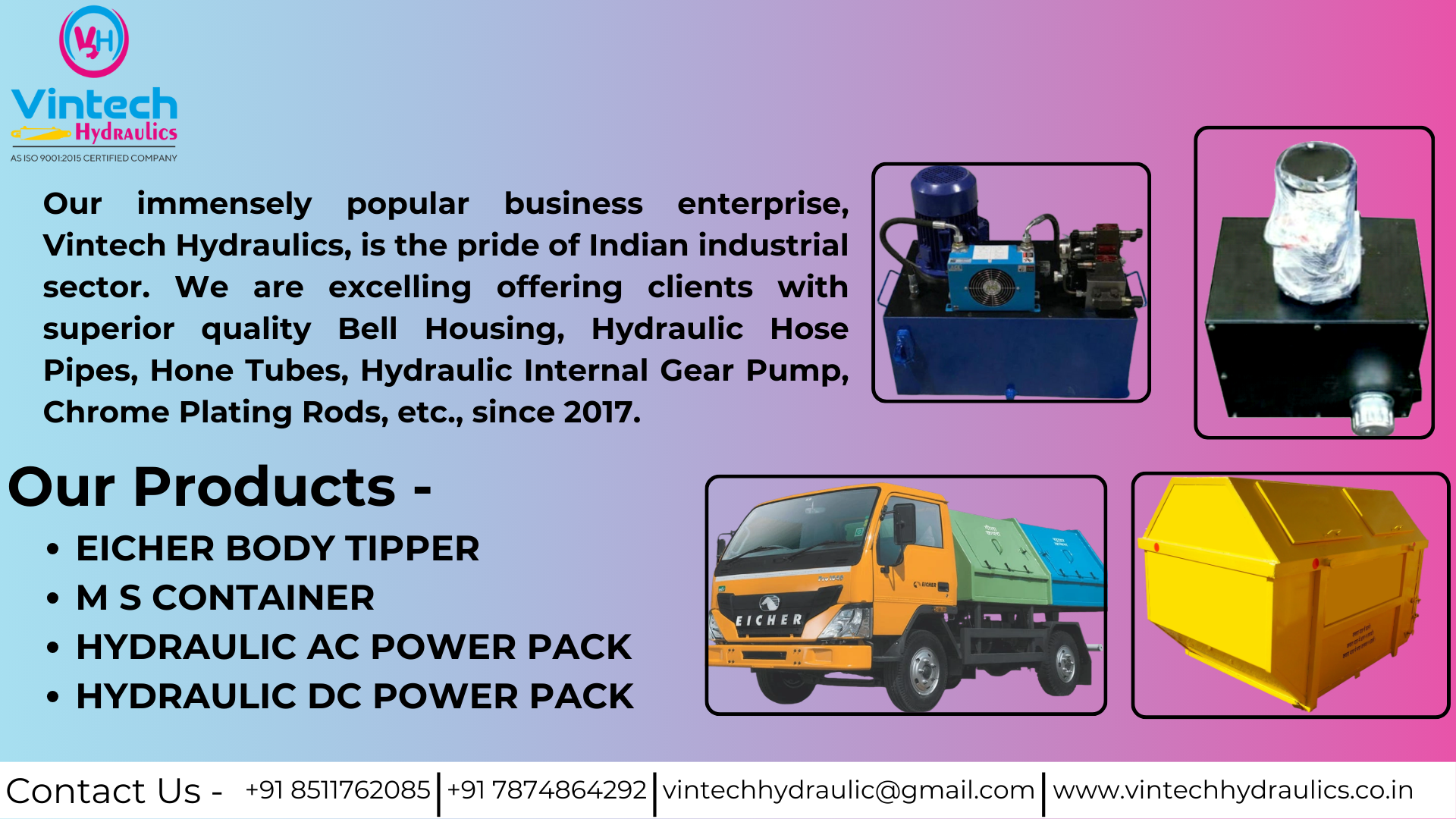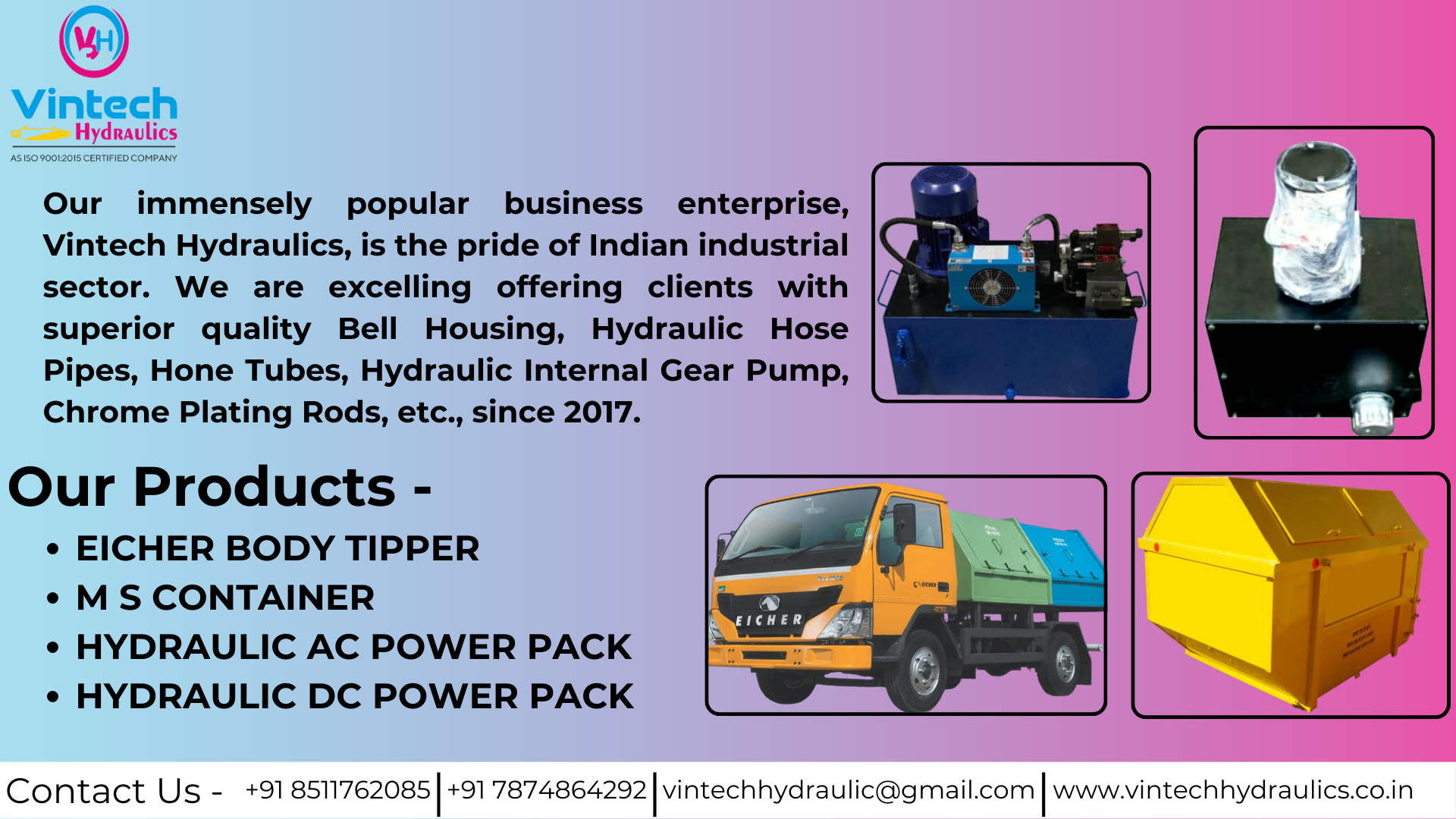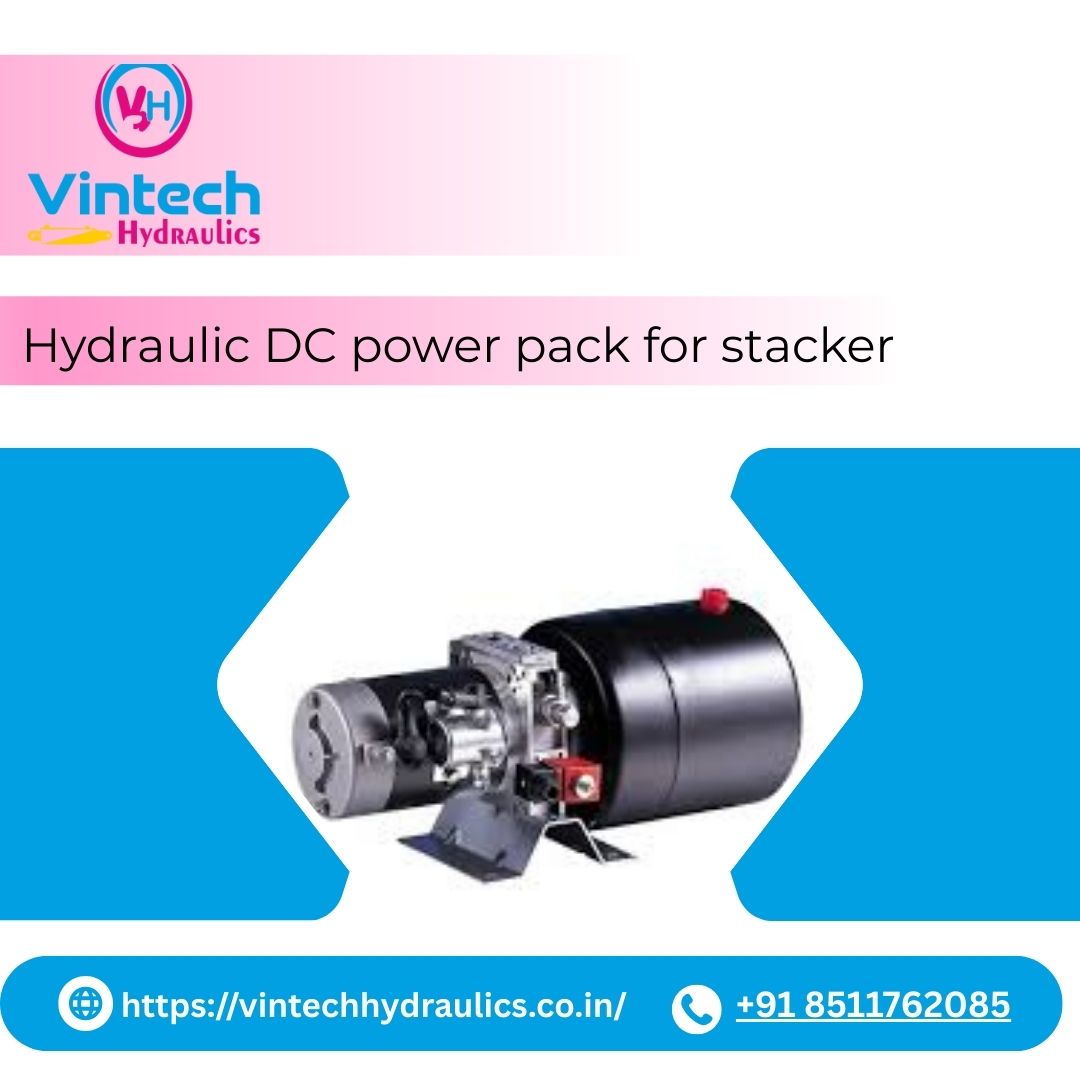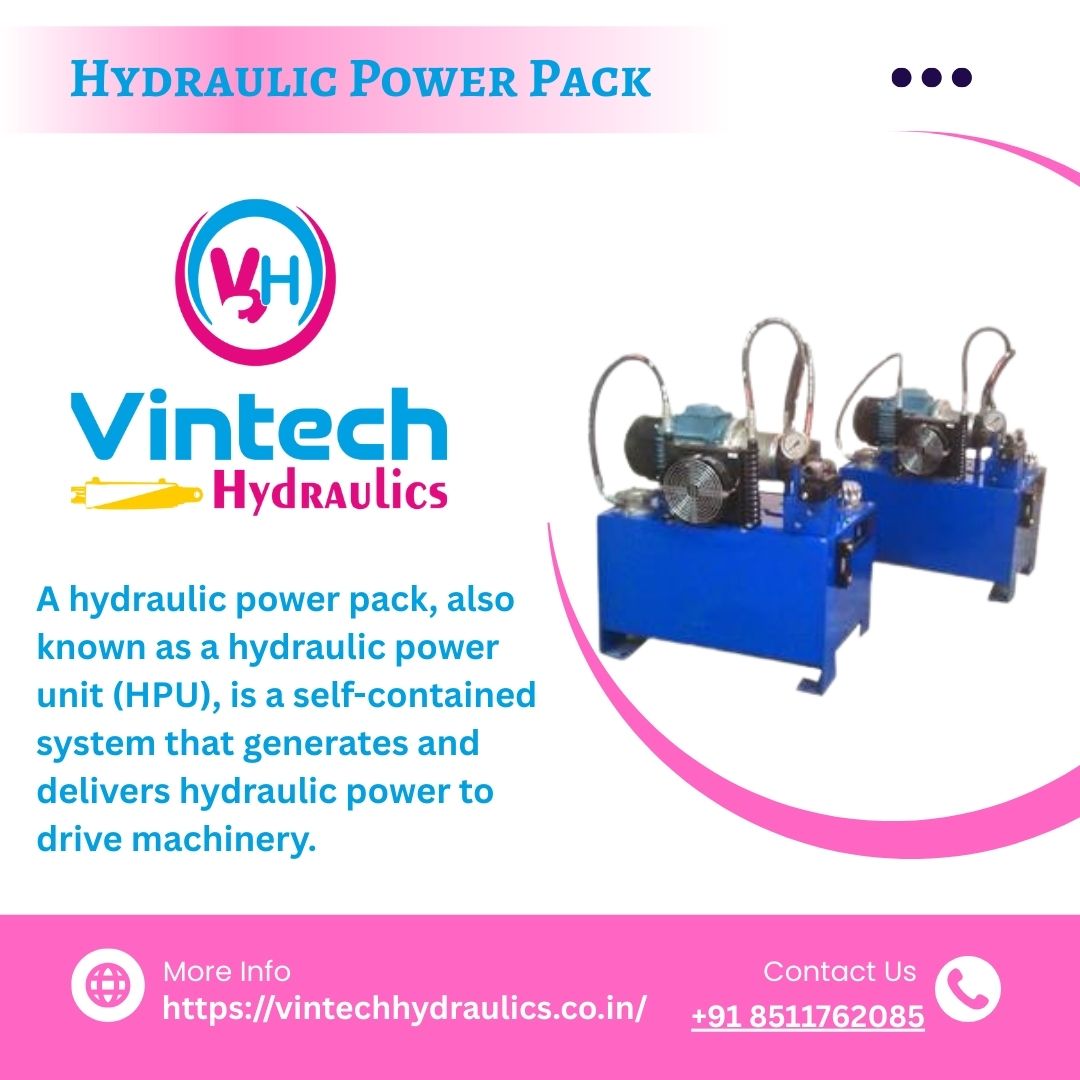
Hydraulic Power Pack
What Is a Hydraulic Power Pack?
A hydraulic power pack, also known as a hydraulic power unit (HPU), is a self-contained system that generates and delivers hydraulic power to drive machinery. It typically comprises a motor, a hydraulic pump, a reservoir, and control valves. These units are essential in applications where high power density and precise control are required
How Is a Hydraulic Power Pack Prepared?
The construction of a hydraulic power pack involves assembling key components
-
Reservoir: Stores hydraulic fluid.
Motor: Powers the pump, typically electric or diesel.
-
Valves: Control the flow and direction of the hydraulic fluid.
-
Filters: Ensure the fluid remains clean, preventing contamination
These components are mounted on a frame or base plate, connected via hoses and fittings. The system is then tested for leaks, pressure, and flow rate to ensure optimal performance.
Uses of Hydraulic Power Packs
Hydraulic power packs are utilized in various sectors:
-
Construction: Operate heavy machinery like excavators and bulldozers.
-
Manufacturing: Power presses, injection molding machines, and conveyors.
-
Automotive: Used in car lifts and braking systems.
-
Marine: Control winches and steering mechanisms.
-
Agriculture: Operate harvesters and other farming equipment.
Advantages of Hydraulic Power Packs
-
High Power Density: Deliver substantial power from a compact unit.
-
Precision Control: Allow for accurate control of speed and force.
-
Energy Efficiency: Convert a significant portion of input energy into usable work.
-
Durability: Built to withstand harsh operating conditions.
-
Versatility: Applicable across various industries and applications.
Frequently Asked Questions
Q1: What maintenance does a hydraulic power pack require?
-
A: Regular checks of fluid levels, filter replacements, and inspection for leaks or wear are essential.
Q2: Can hydraulic power packs be customized?
-
A: Yes, manufacturers often offer customization to meet specific pressure, flow, and size requirements.
Q3: How long do hydraulic power packs last?
-
A: With proper maintenance, they can operate efficiently for 10-15 years or more
How a Hydraulic Power Pack Is Prepared (Manufacturing Process)
The creation of a hydraulic power pack involves precision engineering and several key steps:
1. Requirement Analysis & Design
Client shares application needs: flow rate, pressure range, oil type, space constraints.
Engineers use CAD software (like AutoCAD or SolidWorks) to design the schematic and layout.
Simulation tools check fluid dynamics and performance.
1. Requirement Analysis & Design
2. Component Selection & Sourcing
Hydraulic Pump: Gear, vane, or piston type based on pressure/flow requirements.
Electric Motor: Typically AC induction motor; DC used for mobile units.
Reservoir Tank: Sized based on oil volume needs (usually 3–5x the system flow rate).
Control Valves: Directional, pressure relief, and flow control valves are selected.
Accessories: Oil level indicators, filters, pressure gauges, suction strainers.
3. Fabrication of the Frame & Reservoir
2. Component Selection & Sourcing
3. Fabrication of the Frame & Reservoir
Reservoir and base frame are cut from mild steel sheets.
Welded and surface-treated (powder coating or anti-rust paint).
Mounting holes and drain plugs are drilled.
4. Assembly
Pump and motor are mounted on anti-vibration pads and aligned with a coupling.
Reservoir is fitted with return lines, filters, and breathers.
Valves and manifold blocks are mounted and connected.
All connections are made using hydraulic hoses, pipes, and fittings.
5. Electrical Wiring (Control Panel)
Electrical box includes:
Contactor, overload relay
Emergency stop
Pressure switches
Programmable logic controller (PLC) for automation (if needed)
6. Fluid Filling and Testing
Filled with hydraulic oil (usually ISO VG 46 or 68 grade).
Tested for: Pressure rating
Flow rate
Temperature rise
Leakage or vibration
Test reports are generated and documented.
7. Quality Inspection & Packaging
Quality team checks for design adherence, safety compliance, noise levels, etc.
Unit is cleaned, painted (if needed), and securely packed for dispatch.
Summary of Key Preparation Components
Component
Purpose
Pump
Generates hydraulic flow
Motor
Drives the pump
Reservoir
Stores hydraulic fluid
Valves
Directs, controls, and regulates fluid
Filters
Remove contaminants from hydraulic fluid
Control Panel
Operates the power pack (manual/automatic)
Conclusion
Component | Purpose |
|---|---|
Pump | Generates hydraulic flow |
Motor | Drives the pump |
Reservoir | Stores hydraulic fluid |
Valves | Directs, controls, and regulates fluid |
Filters | Remove contaminants from hydraulic fluid |
Control Panel | Operates the power pack (manual/automatic) |
Hydraulic power packs are vital for powering machinery across various industries, offering high efficiency, reliability, and control. Ahmedabad hosts several reputable manufacturers providing quality and customizable solutions to meet diverse industrial needs. Regular maintenance and proper usage can ensure these systems serve effectively for many years.
Website:-https://vintechhydraulics.co.in/
Gmail:- vintechhydraulic@gmail.com
